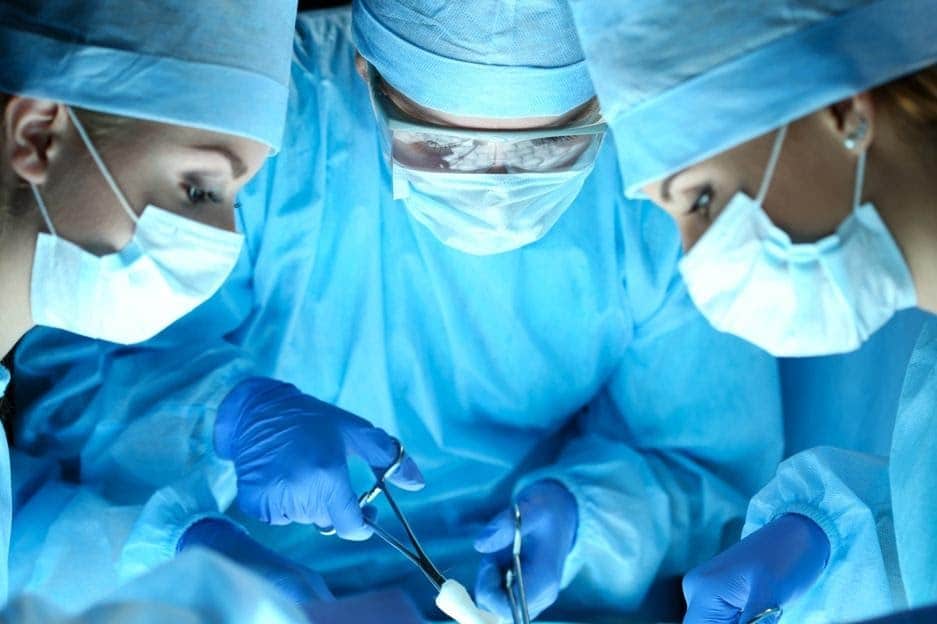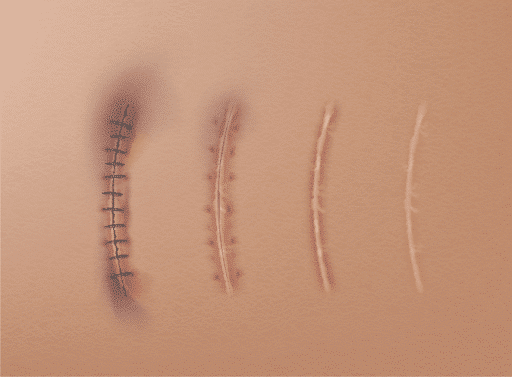How Long Does It Take for a Surgical Incision to Heal?
 Surgical incision healing is facilitated in the operating room by the surgeon who often provides initial closure of the wound edges through the use of surgical glue, sutures, or staples. However, some surgical wounds cannot be closed in this manner in order to allow for drainage or other needs of the surgical site. An open surgical wound may have been left open intentionally after surgery or re-opened at a later time because of infection. This opening may be along the entire cut or just part of it. Once a wound has opened, your doctor may decide to let the wound heal from the inside out. There is no cut-and-dry answer to healing time. The type and location of the surgical procedure, your underlying health, and incisional care may all impact the time to heal. Whether the wound was left open or closed, it will still proceed through specific phases to achieve healing.
Surgical incision healing is facilitated in the operating room by the surgeon who often provides initial closure of the wound edges through the use of surgical glue, sutures, or staples. However, some surgical wounds cannot be closed in this manner in order to allow for drainage or other needs of the surgical site. An open surgical wound may have been left open intentionally after surgery or re-opened at a later time because of infection. This opening may be along the entire cut or just part of it. Once a wound has opened, your doctor may decide to let the wound heal from the inside out. There is no cut-and-dry answer to healing time. The type and location of the surgical procedure, your underlying health, and incisional care may all impact the time to heal. Whether the wound was left open or closed, it will still proceed through specific phases to achieve healing.
How Surgical Incisions Heal
Normal surgical incision healing will proceed through several phases. The first phase involves the management of bleeding and begins in the operating room. Platelets in the blood cluster together making a type of plug, while proteins such as collagen and fibrin work together to firmly hold it in place to stop the bleeding.
During the next phase which can take up to 6 days after surgery, you may notice some pain, swelling, and slight redness. This is a normal response of the body to an injury. During this phase, the body focuses on destroying bacteria and removing debris with the influx of oxygen, nutrients, and white blood cells. The white blood cells help to keep the wound clean and protect the wound by fighting off bacteria that may try to invade the wound.
 The rebuilding phase is one in which the body can start reparative activities to the damaged area. This phase lasts from about 4 days to a month after surgery. It includes the normal development of a thickening area along the incisional line indicating deposition of new collagen in the wound, often referred to as a healing ridge. This firmness will cover the entire incision line and begin to soften and flatten about 2-3 weeks following surgery.
The rebuilding phase is one in which the body can start reparative activities to the damaged area. This phase lasts from about 4 days to a month after surgery. It includes the normal development of a thickening area along the incisional line indicating deposition of new collagen in the wound, often referred to as a healing ridge. This firmness will cover the entire incision line and begin to soften and flatten about 2-3 weeks following surgery.
The last phase is often referred to as the remodeling phase. This phase lasts from 21 days up to 2 years. In this final and longest phase, collagen synthesis is ongoing in order to strengthen the tissue. Remodeling occurs as the wound continues to contract and fibers are being reorganized, with a reduction in capillaries and scar formation. The scar will change in color as it matures from red to a lighter color.
Incision Type and Size
An incision is a cut made into the tissues of the body to expose the underlying tissue, bone, or organ so that a surgical procedure can be performed. It varies from surgery to surgery based on the area and the severity of the problem. It allows the surgeon enough room to work and visualize the area as well as insert the necessary surgical instruments to perform the surgery.
 Laparoscopic incisions are much smaller than the traditional open incision and are just large enough to allow surgical instruments to be inserted into the body. Instead of having one incision that is three inches long, you may have three or four that are less than an inch long. It may seem odd that multiple incisions are better than one, but it is harder for the body to heal one large incision than multiple small incisions.
Laparoscopic incisions are much smaller than the traditional open incision and are just large enough to allow surgical instruments to be inserted into the body. Instead of having one incision that is three inches long, you may have three or four that are less than an inch long. It may seem odd that multiple incisions are better than one, but it is harder for the body to heal one large incision than multiple small incisions.
It is also important to note that incisions are not just a cut into the skin, but are actually much deeper than they appear on the surface. This is also why an incision may appear to have healed on the surface in only a week or two but can take months to reach full strength as the underlying muscle and tissues continue to heal. It is also why your surgeon may give you restrictions to not lift anything heavy that last well beyond when the wound appears healed.
Health of the Patient
Another factor that may speed or slow healing time is the patient’s state of health.
If the patient is deemed to be in good health by the surgeon and the pre-operative tests concur, then it’s fairly easy to predict an estimated healing time, depending on the incision type and barring complications. Patients who have underlying health conditions such as diabetes, or extrinsic factors that are known to delay healing such as smoking or radiation to the surgical site, are at a much higher risk for problems with healing. Other factors impacting healing include the patient’s age, nutritional status, certain medications, and obesity.
After undergoing a surgical procedure, you’ll need to follow your surgeon’s directions for care of the surgical incision site for the timeliest healing outcome. Your surgeon will direct not only your post-operative surgical site care, but should be able to give you specific information on when you can exercise again, and return to your daily routine. As you’re recovering from surgery, you may be prescribed wound dressings and cleansers to keep the healing process on track.
To learn more about a product that is indicated for the management of surgical wounds, please visit https://sanaramedtech.com/surgical/celleraterx-surgical.




